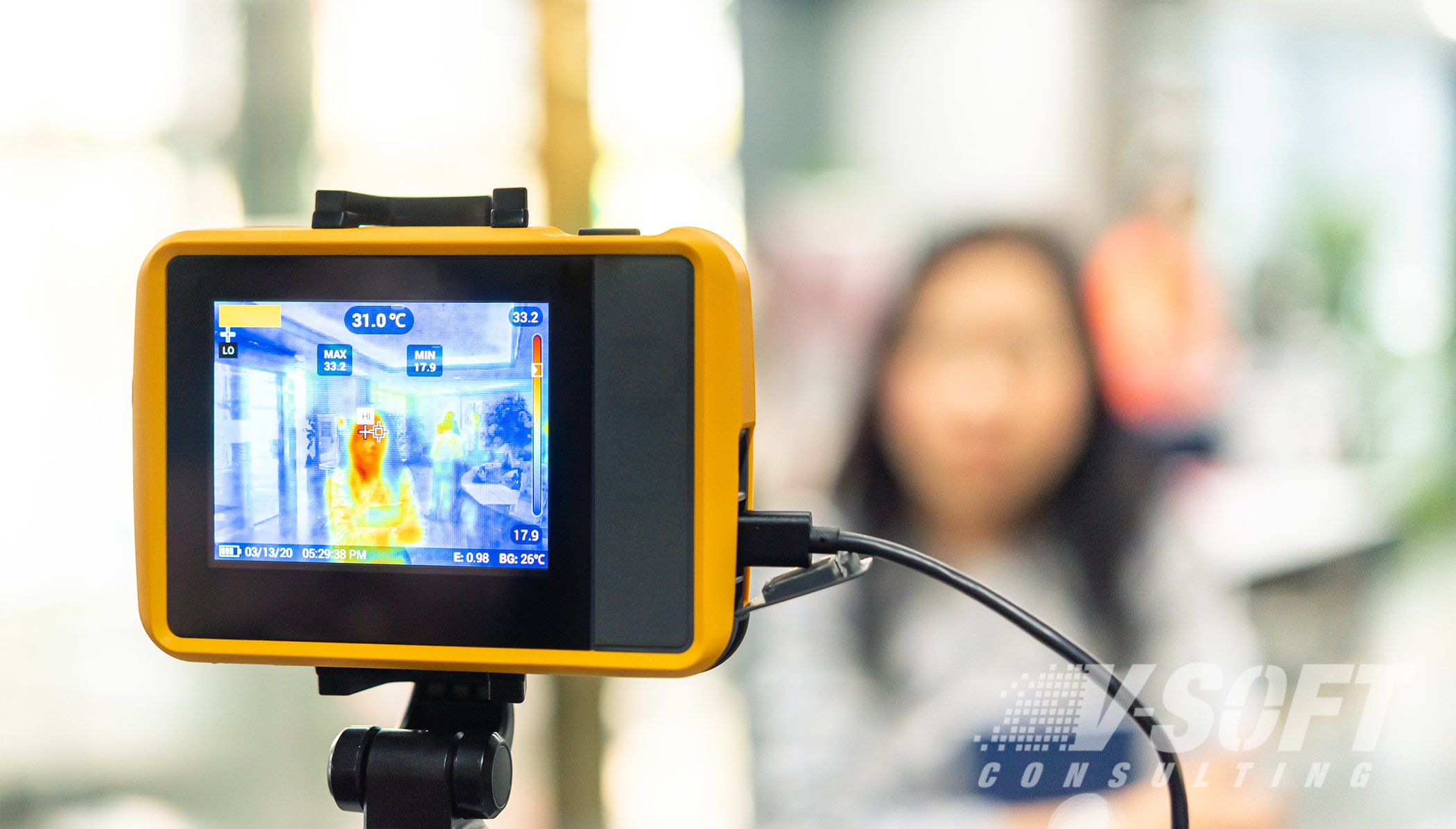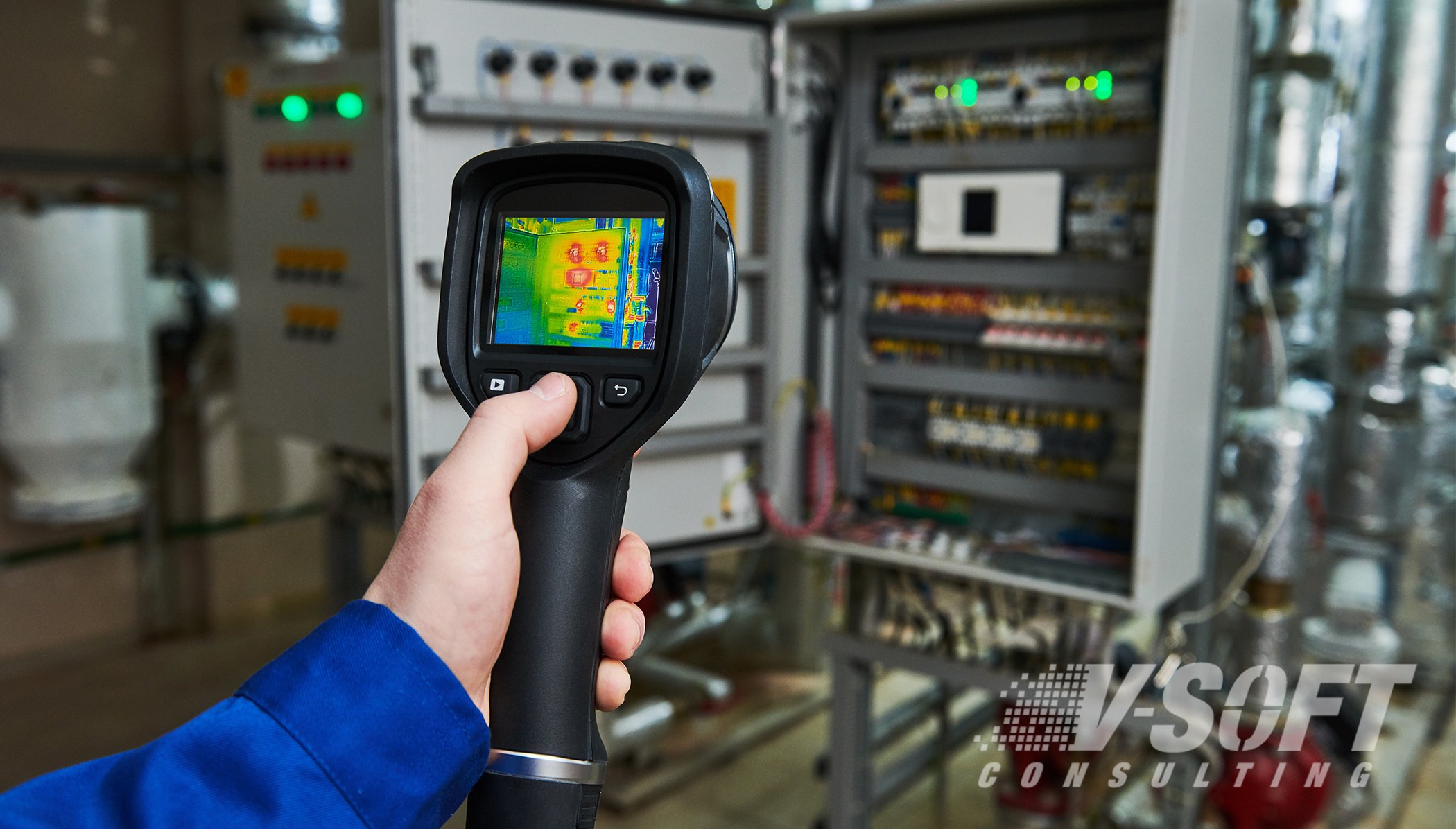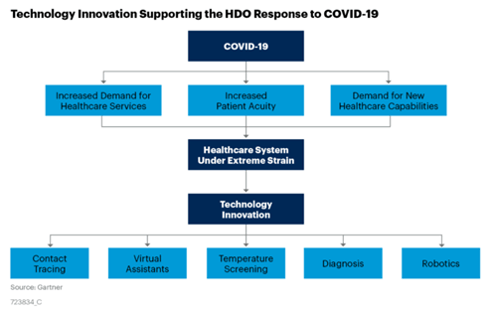2020 has shown us time and time again the need to constantly adapt to changing circumstances. With CDC recommendations and health advisories, businesses and organizations alike have begun adopting technology solutions to help ensure the health and safety of employees and staff. Thermal imaging is an innovative technology that’s grown significantly in recent months due to its fitting application to current conditions and ease of integration with existing equipment.
What is Thermal Imaging?
In the simplest of terms, thermal imaging allows you to detect and measure heat that’s emitted from an object, otherwise known as infrared radiation. With the use of thermal cameras, thermal imaging can record temperatures of various objects in a given frame. The infrared frequencies are converted into electronic signals which can then be viewed as colors. The hotter an object is, the more radiation it releases and the image will appear in shades or red, orange or yellow. The cooler an object is, the image will display shades of blue, purple or green.

How Does Thermal Imaging Work?
To understand how thermal imaging works, you need to understand the basic process occurring within thermal cameras themselves. Inside of a thermal camera, there are a bunch of tiny measuring devices that capture infrared radiation, called microbolometers inside the thermal camera. From there, the microbolometer records the temperature and assigns that pixel to an appropriate color, based on the level of heat. These colors are what we see with our eyes, as infrared lights, while they can be felt if the intensity is high enough, are invisible to the naked eye.
Real-Life Applications of Thermal Imaging
Now that we understand what thermal imaging is and how the process works, what does that mean for businesses and organizations? How can this technology be applied and adapted to real life situations? Here are some examples on how various industries can benefit from thermal imaging solutions:
- Oil & Gas Industry: Detecting heat from invisible gas emissions – elevated temperatures can mean a gas leak has occurred. Real time alerts by thermal cameras allow the proper measures to be taken quickly.
- Electrical Industry: Identifying electrical issues along power lines/systems – elevated temperatures can signal the need for maintenance of damaged lines.
- Healthcare Industry: Detecting elevated skin/body temperatures of patients – elevated temperatures can be a sign of sickness or distress and can alert healthcare workers that precautions should be taken.
- Manufacturing Industry: Monitoring temperatures of electrical/mechanical equipment – elevated temperatures can signal an equipment failure or overworked machine.

Creating a Safer Environment in a Global Pandemic
Globally, businesses are turning to digital innovations to respond to the COVID-19 pandemic, according to Gartner. “Healthcare provider CIOs should use this research to inform their planning as they determine the appropriateness of adopting these new and emerging technologies across their organization.”
Thermal cameras can identify elevated body temperatures, a common symptom of COVID-19, for those entering a particular building. With this contactless solution, temperatures of individuals can be sent to a database and relevant officials can be alerted if a temperature exceeds a specific threshold to enter, such as 100.4° F, the CDC’s definition of a fever. This application can be rolled out to schools to check temperatures of students and faculty entering a school, to businesses to check temperatures of employees entering an office building, and more. With this technology, organizations can be proactive in detecting elevated body temperatures before anyone enters a specific building, adding an extra layer of screening, security and protection to employees, students and staff.

















